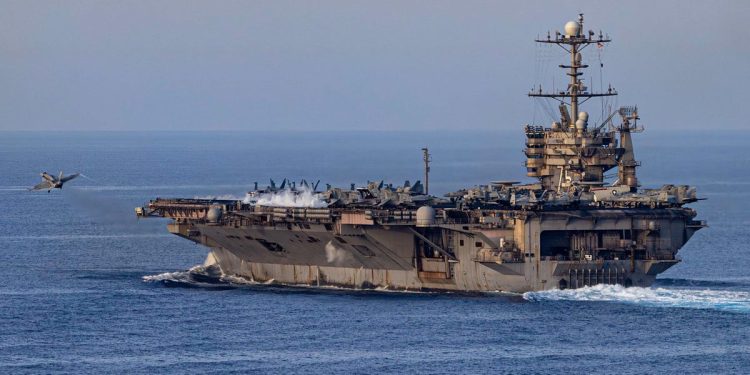American aircraft carriers are in motion while the US military reacts to increasing tensions in the Middle East.
The United States officially extended the deployment of an aircraft carrier in the Middle East and send another in the region, the Pentagon announced on Tuesday. A third goes to the Western Pacific to maintain an American presence in the middle of the increased accent in the area of central command.
Defense Secretary Pete Hegseth ordered Harry S. Truman’s carrier’s striker’s striker to stay in the Middle East region “to support regional deterrence and force protection efforts,” said Sean Parnell, chief spokesperson for the Pentagon, in a statement.
The strike group led by the aircraft carrier USS Harry S. Truman entered the area of responsibility for the central command of the United States, which covers the Middle East, in mid-December to resume one year’s fight against the Houthis in Yemen.
The American army has significantly intensified its campaign against the Houthis in recent weeks, while the Trump administration ordered the American forces to hit the rebels with air strikes until they stop their attacks against the Red Sea. Truman Strike Group was involved in these efforts.
A fighter plane takes off from the Truman in March. Photo of the American Navy
Parnell said the Carl Vinson Carrier Strike Group, which is led by the transporter USS Carl Vinson equipped with F-35C Spealth Fighter Jets, will arrive in the Centcom responsibility area “to continue to promote regional stability, dissuade the assault and protect the free trade flow in the region” after completing a planned exercise in Indo-Pacia.
We do not know how long the two strike groups of the two carriers of the navy could overlap in the Middle East, but it is a notable demonstration of force. The navy had two carriers in the region in summer for the last time while the Houthis pulled missiles and drones from ships from the Red Sea and the Gulf of Aden.
The official update of the Pentagon forces posture confirms previous reports and is involved in the middle of high tensions between the Trump administration and Iran and the Houthi supported by Tehran.
Parnell said Hegseth directed more planes to the Middle East. The United States has moved both A-10 attack planes and B-2 stealth bombers in the region. The Vinson also brings a considerable air wing.
The Nimitz Uss Carl Vinson class aircraft carrier leaves South Korea in March. Photo of the US Navy by specialist in mass communication for the apprentice sailor pablo chavez
“Secretary Hegseth continues to specify that if Iran or its proxies threaten American staff and interests in the region, the United States will take decisive measures to defend our people,” said Pentagon spokesman.
His comments echo those of President Donald Trump, who said on Monday that strikes against the Houthis would continue if the rebels do not stop attacking American ships. He warned that “real pain is still to come” for Houthis and Iran.
While the American masses force themselves in the Middle East, the Pentagon said that the Nimitz carrier’s strike group led by aging USS Nimitz had started a deployment in the Western Pacific, where it will maintain the presence of the aircraft carrier of the navy.
It was previously feared that a sur-Souci on the deployment of carriers and other warships in the Middle East leaves gaps in the presence of American force in Indo-Pacific, which houses the head of American rival China, a priority challenge.
businessinsider



